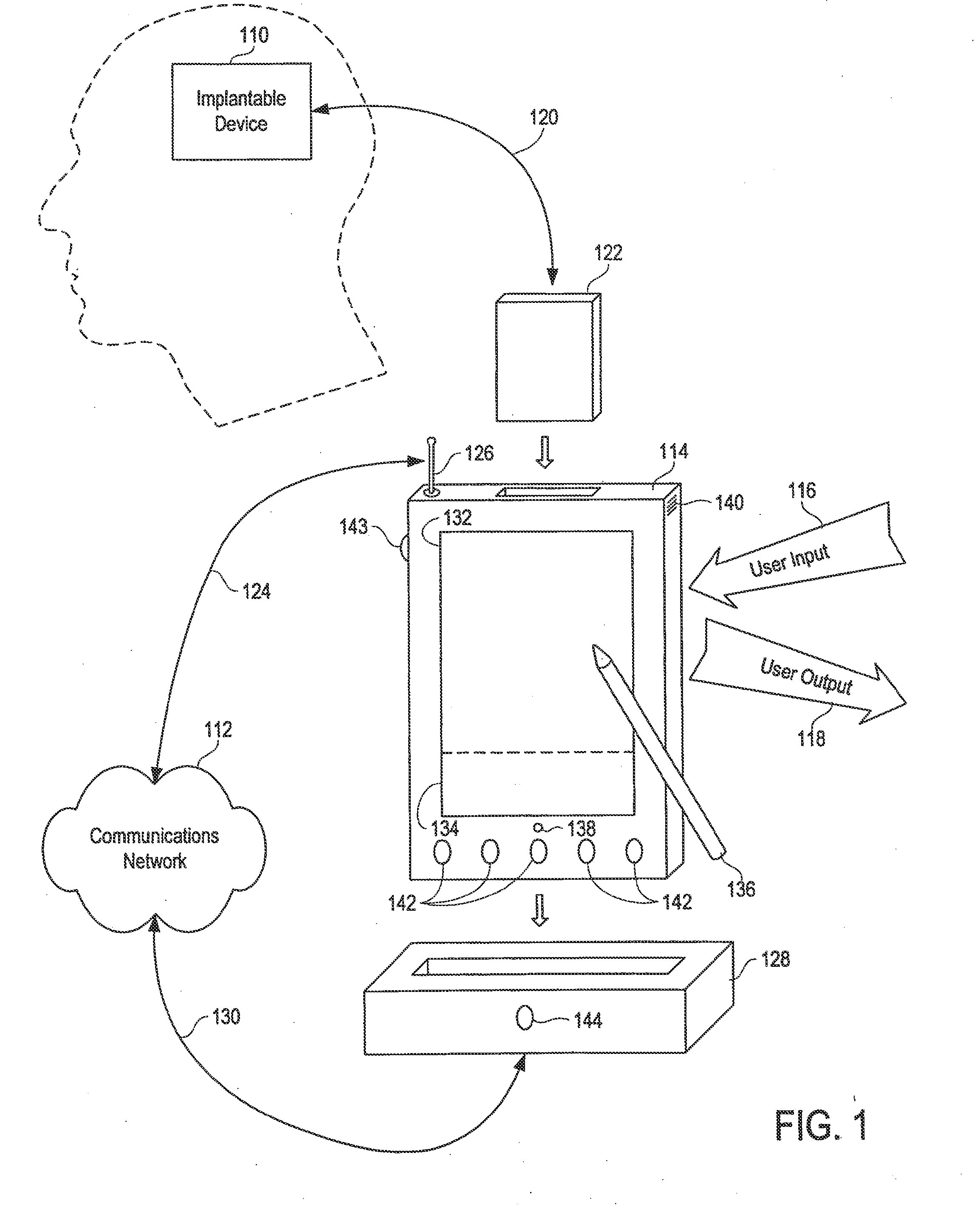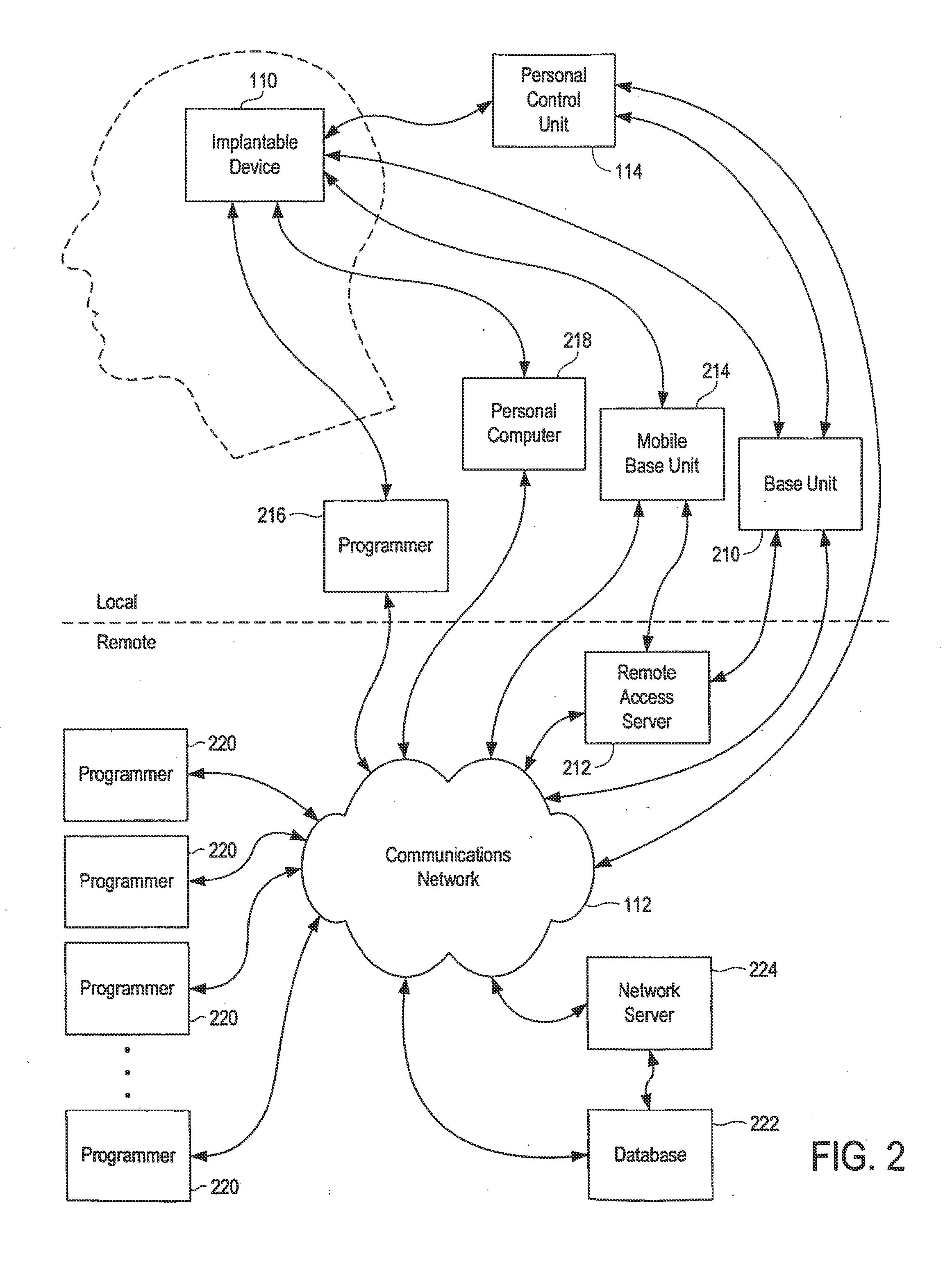Systems and methods for interacting with an implantable medical device
a medical device and implantable technology, applied in the field of implantable medical device systems, can solve the problems of physical impairment, deterioration of other brain functions (including cognitive function), frequent limitation of sufferers, etc., and achieve the effect of great flexibility and control over patient management and car
- Summary
- Abstract
- Description
- Claims
- Application Information
AI Technical Summary
Benefits of technology
Problems solved by technology
Method used
Image
Examples
Embodiment Construction
[0056]The invention is described below, with reference to detailed illustrative embodiments. It will be apparent that a system according to the invention may be embodied in a wide variety of forms. Consequently, the specific structural and functional details disclosed herein are representative and do not limit the scope of the invention.
[0057]Referring initially to FIG. 1, an implantable device 110 is illustrated. In the disclosed embodiment of the invention, the implantable device is a programmable neurostimulator for the treatment of epilepsy and other neurological disorders. See U.S. application Ser. No. 09 / 896,092, filed on Jun. 28, 2001, for a description of an exemplary neurostimulator; U.S. Pat. No. 6,016,449 to Fischell et al. contains illustrative details of an alternative embodiment.
[0058]The present invention enables communication between the implantable device 110 and a communications network 112 (such as the Internet) by way of a personal control unit (PCU) 114 or a sim...
PUM
 Login to View More
Login to View More Abstract
Description
Claims
Application Information
 Login to View More
Login to View More - R&D
- Intellectual Property
- Life Sciences
- Materials
- Tech Scout
- Unparalleled Data Quality
- Higher Quality Content
- 60% Fewer Hallucinations
Browse by: Latest US Patents, China's latest patents, Technical Efficacy Thesaurus, Application Domain, Technology Topic, Popular Technical Reports.
© 2025 PatSnap. All rights reserved.Legal|Privacy policy|Modern Slavery Act Transparency Statement|Sitemap|About US| Contact US: help@patsnap.com



